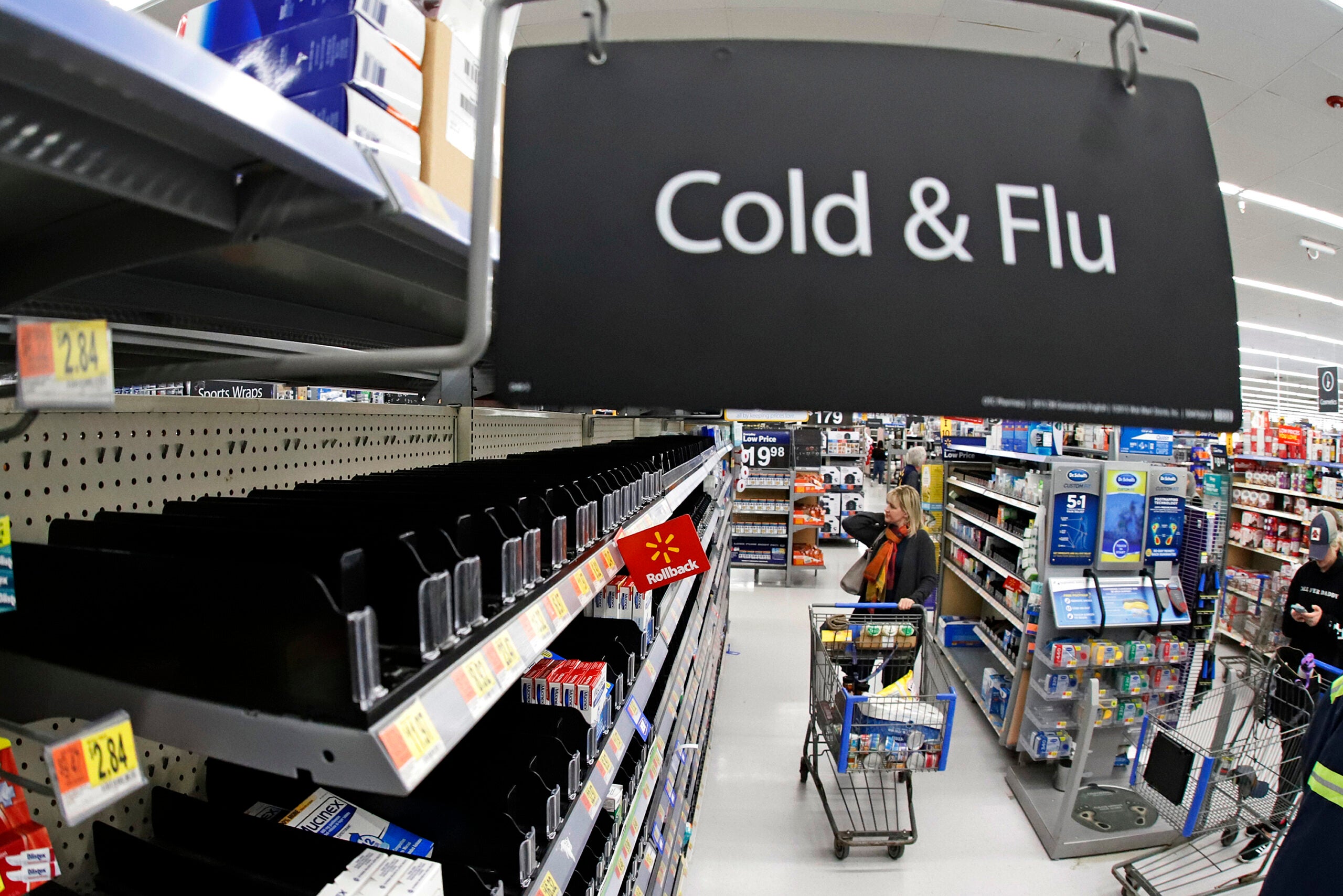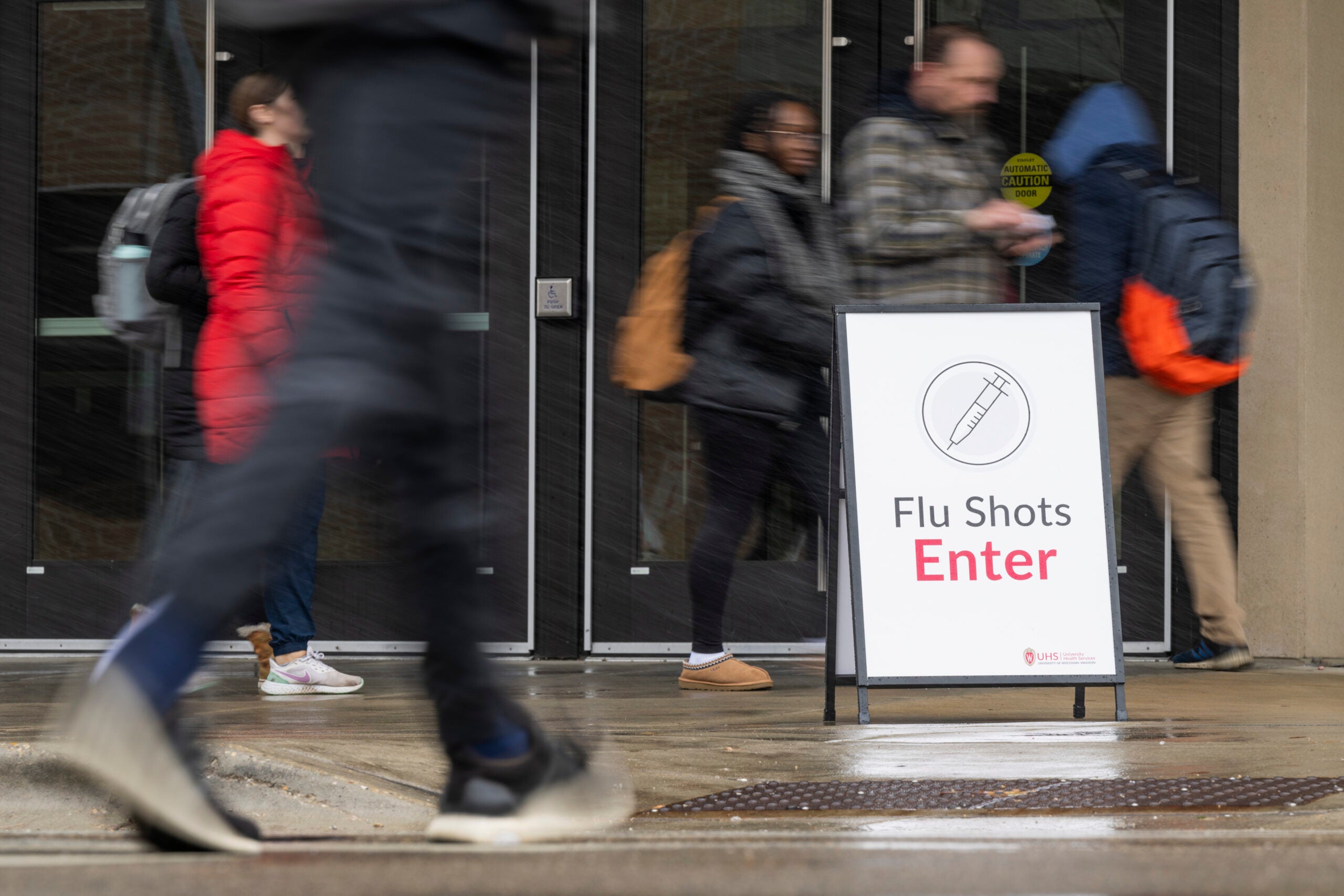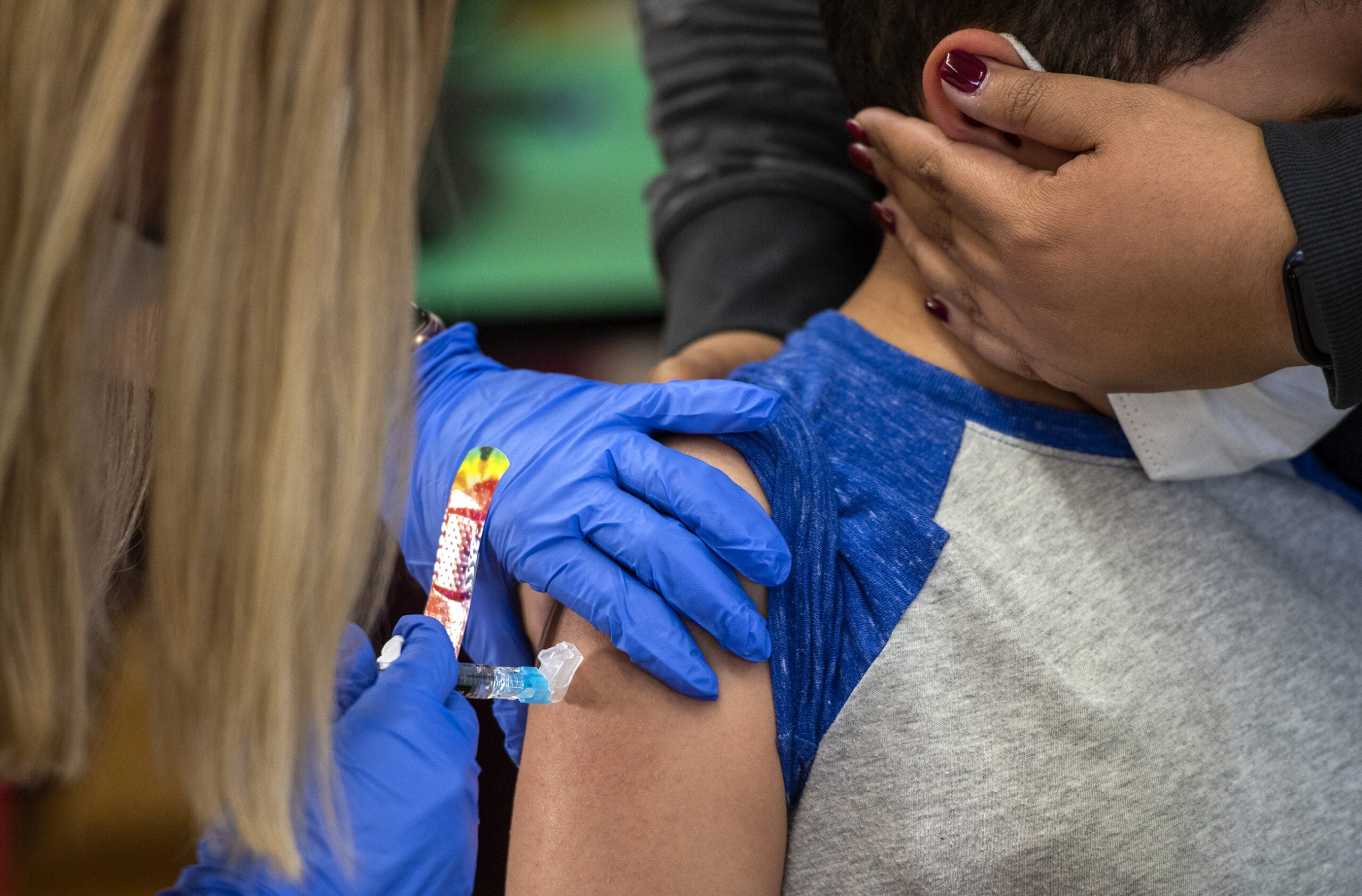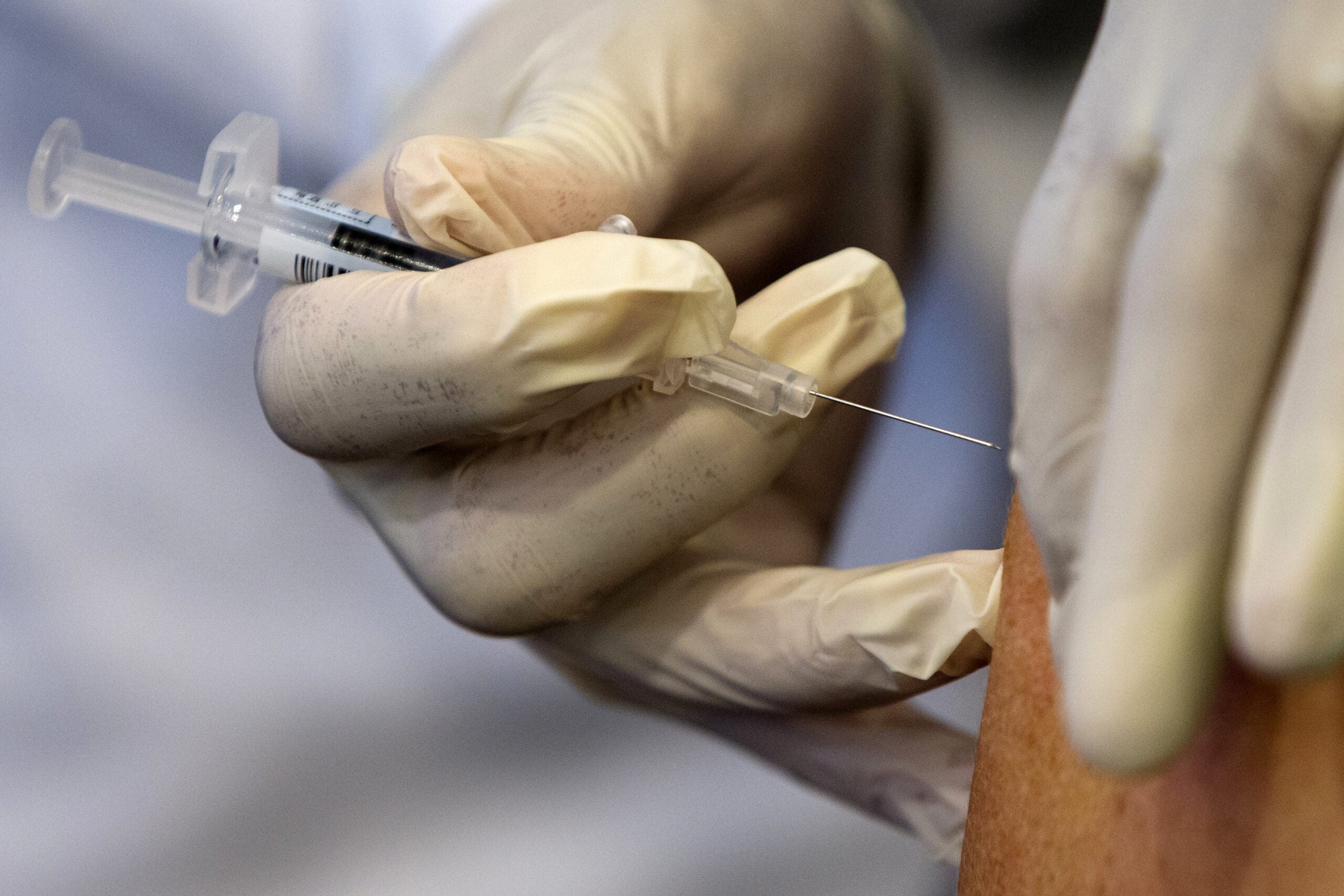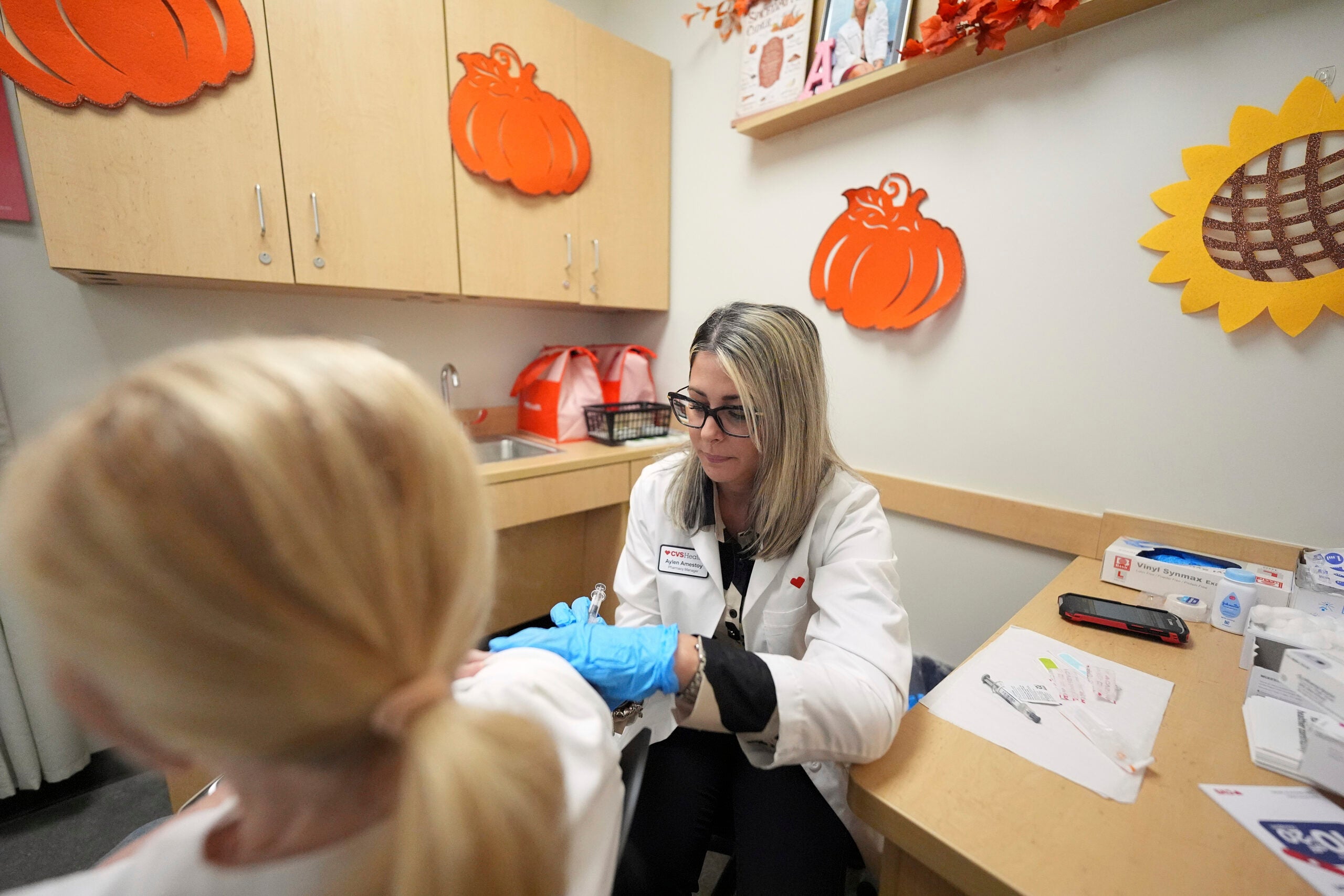Wisconsin is seeing high levels of respiratory illness activity, according to the Centers for Disease Control and Prevention.
Tom Haupt, the influenza surveillance coordinator at the Wisconsin Department of Health Services, joined “Morning Edition” Host Alex Crowe to talk about ways to minimize getting sick.
This interview has been edited for clarity.
News with a little more humanity
WPR’s “Wisconsin Today” newsletter keeps you connected to the state you love without feeling overwhelmed. No paywall. No agenda. No corporate filter.
Alex Crowe: So right off the bat, according to the CDC and their levels that they monitor and post online, we’re seeing high levels of respiratory illness activity in Wisconsin. What can you tell us about which respiratory illnesses are most prevalent here in the state right now?
Tom Haupt: Right now we have at least three respiratory viruses that are very prevalent … COVID-19, respiratory syncytial virus or RSV, and influenza A are all circulating at very high rates at this particular time. This is very similar to what we had last year, where all three of them were circulating at high activity rates at the same time.
Usually one would precede the other and we would not have all three going at the same time. But it is very high activity for all three of them.
AC: Tom, we’ve been waiting for a while for things to get really cold here in Wisconsin for winter. And it seems like that’s finally here. So are we seeing an increase in hospitalizations here in Wisconsin because of respiratory illnesses? And if not, do we expect to see more of an increase now that everyone’s really going to be forced indoors because of this cold?
TH: Right now, we’re not seeing a significant increase in hospitalizations. We do know that the hospitals are becoming more full every day. We don’t know for sure how the weather is going to be changing that.
Right now, no one has had to go into any surge policies at the hospitals, nor have they been diverting patients. So we’re hoping that continues on, but we continue to monitor that very closely over the next few days. Because, as you said, it could be that this is just the calm before the storm and we could see an increase in hospitalizations for any of the three viruses.
AC: There are also other parts of the country, according to the same website from the CDC, where respiratory illnesses are spreading more rapidly. Particularly in the southeast and the northeast. If people recently went to these parts of to country to visit family over the holidays, are there any sort of precautions they should be taking right now?
TH: We want people who do realize if they become sick to take precautions and to stay away from people who might be at high risk of influenza or COVID or RSV complications and that would include pneumonia or hospitalizations.
Unfortunately, we have had deaths from RSV as well. They also have to keep in mind that with COVID-19, you can actually spread this at least a day before you become ill. That has to be taken into account if they’re visiting people who are at high risk.
For example, people who are in a nursing home, older populations, or a family member who has just recently had a newborn baby. You want to make sure that they stay away from them and take all the precautions to make sure that these very susceptible populations do not get sick. Because they could wind up with some very severe complications.
AC: As we talk about precautions that people can take particularly for RSV, I know there’s a vaccine out there that pregnant women can take. Is this something that protects both the mother and the child? How far along in their pregnancy should they get it? Can you give us a few details about that?
TH: Absolutely. It’s a Pfizer vaccine that’s given to pregnant women between the 32nd and 36th and six days of pregnancy. We want them to have the shot before they get into their 37th week of pregnancy and after their 32nd week of pregnancy.
It’s something that the mother or mother-to-be will be developing antibodies, which can be spread to the fetus and then protect the fetus for up to six months. Those first six months of life is when a child is most susceptible to RSV, especially those who may have any kind of underlying illnesses because of the pregnancy. We strongly encourage any person who is pregnant, or expected to be pregnant during those particular times, weeks 32 to 36.6.
AC: Tom, as the influenza surveillance coordinator, is there anything else you think we should know about what’s going on here in the state right now?
TH: Our vaccination rates for influenza, RSV and COVID boosters are low. We strongly encourage people to think about getting vaccinated. It’s not too late to do that. The vaccine is in good supply and it’s safe. We’re really encouraging people to think about vaccinations as a main source of preventing illness and spreading illness to those people who may be at high risk of developing any complications.
Wisconsin Public Radio, © Copyright 2026, Board of Regents of the University of Wisconsin System and Wisconsin Educational Communications Board.
